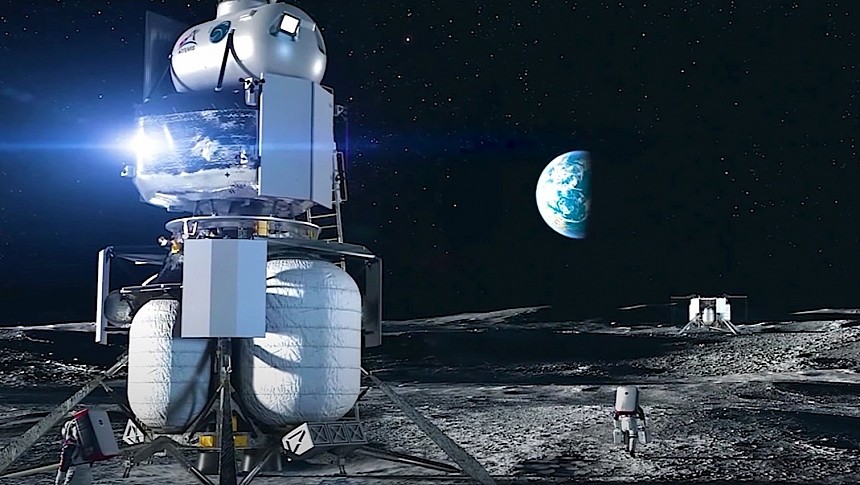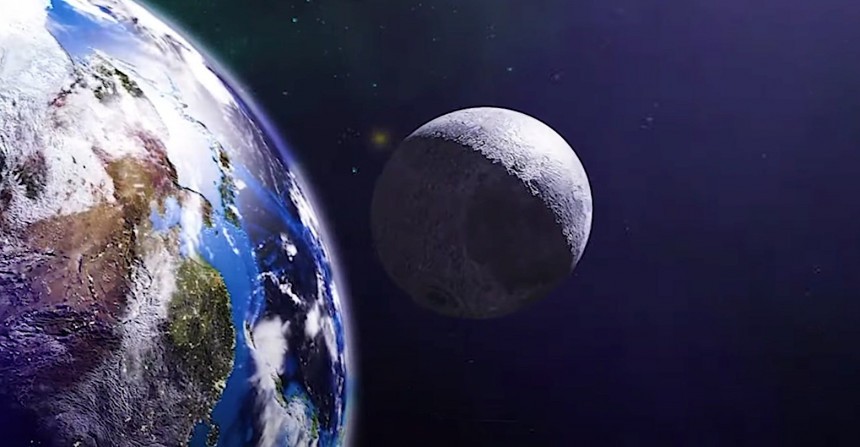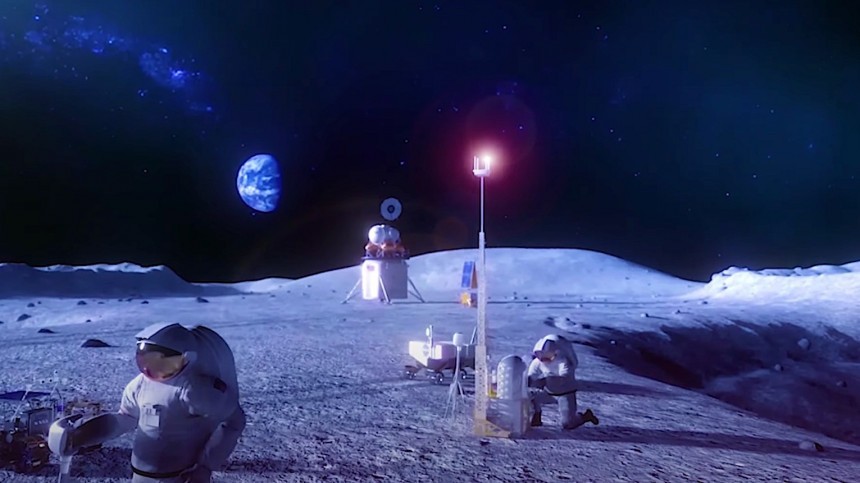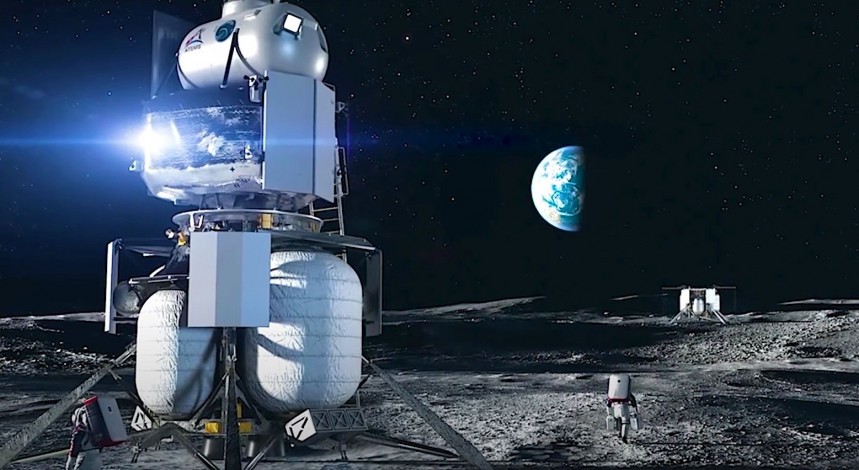It seems like forever since humanity has begun looking at the Moon with desire in its eyes. Desire to make the place its own, the home away from home, and a staging post for our expansion in the solar system. We're now closer than we've ever been to realizing that dream.
The Artemis program that's presently the talk of the space industry will inevitably lead to the creation of the first-ever Moon colonies, both in orbit and on the surface. This is, if you like, the stated goal of the powers behind Artemis, and we're all rooting for their plans to come together in perfect fashion.
At first glance, setting up off-world colonies may seem simple. Just send people and materials for the habitats, space-based or otherwise, to be built, and voila! Instant inhabited world.
That may be so as far as the actual building of structures goes, but it's when an off-world habitat is ready that the true hardship begins. The place needs to be maintained, supplied and repaired, and most of all it needs to have access to resources like food, water, and power on a constant basis.
Ensuring a habitat can survive after its initial days is thus the trickiest part of space exploration, and also the most resource-consuming. To tackle the many distinct challenges that arise from the constant operation of structures on alien worlds, NASA and all the other parties involved in the Artemis program are working hard, together with private partners, to come up with the best solutions.
This story is about how NASA plans to ensure power of the electrical kind is generated and transported on the Moon. Because, you know, you can't have much of anything without power.
We're not yet at a point when we can say a magical solution to get power to the Moon was found, but people are working on coming up with the best solutions. And several avenues of research are part of something NASA calls the Watts on the Moon Challenge.
The program was launched back in 2020 as a means to find solutions for "energy distribution, management, and storage" not only for future human habitats, but also for industrial activity, of which plenty is expected to take place up there.
Why, you could ask, do we need an entire research program for this and not use the energy provided by the Sun for lunar needs, captured by solar panels the likes of which we see plenty here on Earth?
The answer is pretty simple, really. Because of the way the Moon spins around its axis and around Earth, its surface regularly plunges into weeks-long nights. This means that solar power generation on the Moon is problematic to say the least. And even if it was somehow made to work, the problem of transporting energy generated in one place to another remains.
Surprisingly, people seem to have all sorts of interesting ideas when it comes to circumventing these issues, and plenty of entries in the challenge were recorded – 336, to be precise. In the summer of 2022, NASA narrowed the list down to seven, and this June further still, so there are now just four ideas left in the competition.
This story is about giving you a taste of each and every one of them, as they could be the ideas that will truly open up the Moon for human civilization.
In March 2023, on the premises of the Ohio State University, a very long, six km (3.7-mile) cable was laid out in an open field. The goal of the exercise was to mimic a transmission line and how it would work on the surface of the Moon.
NASA says the team managed to send power through the cable, with an energy load large enough to support a television and sound system.
The test of what is generically called the Electric Moon project opened the door for the team to use this approach, combined with modular, multilevel power conversion, to make the transmission of power on the surface of the Moon possible.
It's not exactly clear what this idea is all about, as NASA only said we're talking about a solution "that can operate within a wide temperature range." Although we don't know what this solution is, it does open the doors to the possibility of generating and distributing power regardless of the lunar day and night.
We're told there is an issue with the weight of the hardware used for this solution, but the team is working on cutting it down.
The only idea in the Watts on the Moon Challenge final four that is not generated by a University is that of Colorado-based tech startup Orbital Mining Corporation. I know, there's a bit of a misnomer there.
These guys are proposing a DC-to-DC converter system capable of running in the cold, dark lunar night. We're talking about a high-voltage piece of tech comprising a lithium-ion battery bank and a direct current wired transmission system.
We don't know its capabilities yet, as the team is currently struggling to "mitigate vacuum arcing to ensure long-term success."
TEMPEST is an acronym, and it stands for Tethered Mechanism for Persistent Energy Storage and Transmission. If you read closely each of the words in its name, an interesting idea will reveal itself: that of using modified lunar rovers to transport energy on the Moon.
The concept is a bit older than the other three, having been already included in the 2020 NASA BIG Idea Challenge, where it won the Artemis Award. Back then, it proposed using tethered robots to carry energy stored in batteries to where it's needed.
Having morphed into TEMPEST, the BIG Idea now envisions modified rovers, a power management system, and battery storage hub as tools to deliver power.
These four ideas are now in Phase 2 Level 3 of the challenge, meaning each group will have to create a prototype of their proposal for testing in a simulated lunar environment. The two winning designs will receive a total of $1.5 million, and a chance to be part of humanity's future.
At first glance, setting up off-world colonies may seem simple. Just send people and materials for the habitats, space-based or otherwise, to be built, and voila! Instant inhabited world.
That may be so as far as the actual building of structures goes, but it's when an off-world habitat is ready that the true hardship begins. The place needs to be maintained, supplied and repaired, and most of all it needs to have access to resources like food, water, and power on a constant basis.
Ensuring a habitat can survive after its initial days is thus the trickiest part of space exploration, and also the most resource-consuming. To tackle the many distinct challenges that arise from the constant operation of structures on alien worlds, NASA and all the other parties involved in the Artemis program are working hard, together with private partners, to come up with the best solutions.
This story is about how NASA plans to ensure power of the electrical kind is generated and transported on the Moon. Because, you know, you can't have much of anything without power.
We're not yet at a point when we can say a magical solution to get power to the Moon was found, but people are working on coming up with the best solutions. And several avenues of research are part of something NASA calls the Watts on the Moon Challenge.
Why, you could ask, do we need an entire research program for this and not use the energy provided by the Sun for lunar needs, captured by solar panels the likes of which we see plenty here on Earth?
The answer is pretty simple, really. Because of the way the Moon spins around its axis and around Earth, its surface regularly plunges into weeks-long nights. This means that solar power generation on the Moon is problematic to say the least. And even if it was somehow made to work, the problem of transporting energy generated in one place to another remains.
Surprisingly, people seem to have all sorts of interesting ideas when it comes to circumventing these issues, and plenty of entries in the challenge were recorded – 336, to be precise. In the summer of 2022, NASA narrowed the list down to seven, and this June further still, so there are now just four ideas left in the competition.
This story is about giving you a taste of each and every one of them, as they could be the ideas that will truly open up the Moon for human civilization.
#4. Electric Moon – Ohio State University in Columbus
NASA says the team managed to send power through the cable, with an energy load large enough to support a television and sound system.
The test of what is generically called the Electric Moon project opened the door for the team to use this approach, combined with modular, multilevel power conversion, to make the transmission of power on the surface of the Moon possible.
#3. High-Efficiency Long-Range Power Solution - University of California in Santa Barbara
The University of California in Santa Barbara has a team dedicated to "studies of the early universe and astrophysical applications of directed energy." Called the UCSB Experimental Cosmology Group, it is behind something pompously called High-Efficiency Long-Range Power Solution. And no, there's no official acronym for it.It's not exactly clear what this idea is all about, as NASA only said we're talking about a solution "that can operate within a wide temperature range." Although we don't know what this solution is, it does open the doors to the possibility of generating and distributing power regardless of the lunar day and night.
We're told there is an issue with the weight of the hardware used for this solution, but the team is working on cutting it down.
#2. DC-to-DC converter - Orbital Mining Corporation
These guys are proposing a DC-to-DC converter system capable of running in the cold, dark lunar night. We're talking about a high-voltage piece of tech comprising a lithium-ion battery bank and a direct current wired transmission system.
We don't know its capabilities yet, as the team is currently struggling to "mitigate vacuum arcing to ensure long-term success."
#1. TEMPEST - Michigan Technological University in Houghton
Of all the four ideas that made it into this phase of the Watts on the Moon Challenge, the TEMPEST is perhaps the most insane.TEMPEST is an acronym, and it stands for Tethered Mechanism for Persistent Energy Storage and Transmission. If you read closely each of the words in its name, an interesting idea will reveal itself: that of using modified lunar rovers to transport energy on the Moon.
The concept is a bit older than the other three, having been already included in the 2020 NASA BIG Idea Challenge, where it won the Artemis Award. Back then, it proposed using tethered robots to carry energy stored in batteries to where it's needed.
Having morphed into TEMPEST, the BIG Idea now envisions modified rovers, a power management system, and battery storage hub as tools to deliver power.
These four ideas are now in Phase 2 Level 3 of the challenge, meaning each group will have to create a prototype of their proposal for testing in a simulated lunar environment. The two winning designs will receive a total of $1.5 million, and a chance to be part of humanity's future.












